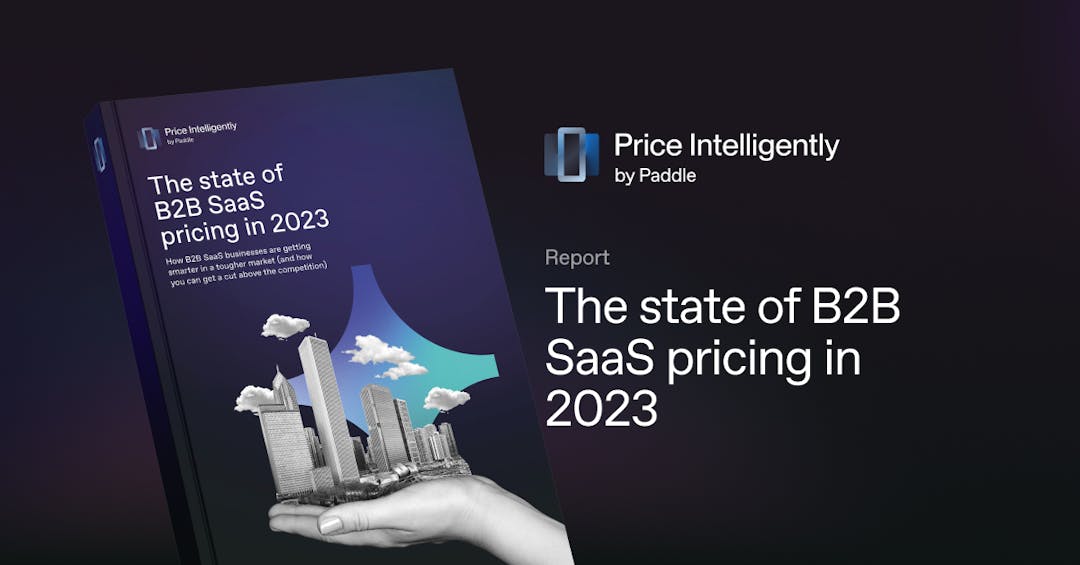If your customers feel like they’re paying for more than they need in their plan, this blog is for you.
We’re asking: Is there a better way to move customers down the funnel without forcing them to accept features they don’t want or value metrics that aren’t relevant? We think the answer is a cautious yes.
In this blog, we’ll talk through when you might want to consider separating your value metrics from your feature set, explain the pros and cons of this decision, and ultimately, how you can do it.
Perhaps it’s time to look beyond the typical “good, better, best” price plan and consider a new approach to tiered pricing. Let’s find out.
Feature set versus value metrics: what’s the problem?
Firstly, what do we mean when we say feature set and value metrics? The term ‘feature set’ refers to the group of features included within each plan. Typically, the base will include all core platform functionality, the advanced plan includes your value drivers, and the premium includes specific features for larger-scale companies.
And ‘value metrics’? Well, these are the units you charge for your product, for instance, per user, per transaction, employee count, and so on.
In a typical “good, better, best” pricing strategy, each plan may include a specific set of features and a fixed amount of a given value metric. For example, an entry-level plan may include core functionalities and up to five users, a mid-level plan offers more advanced features for up to ten users, and so forth.
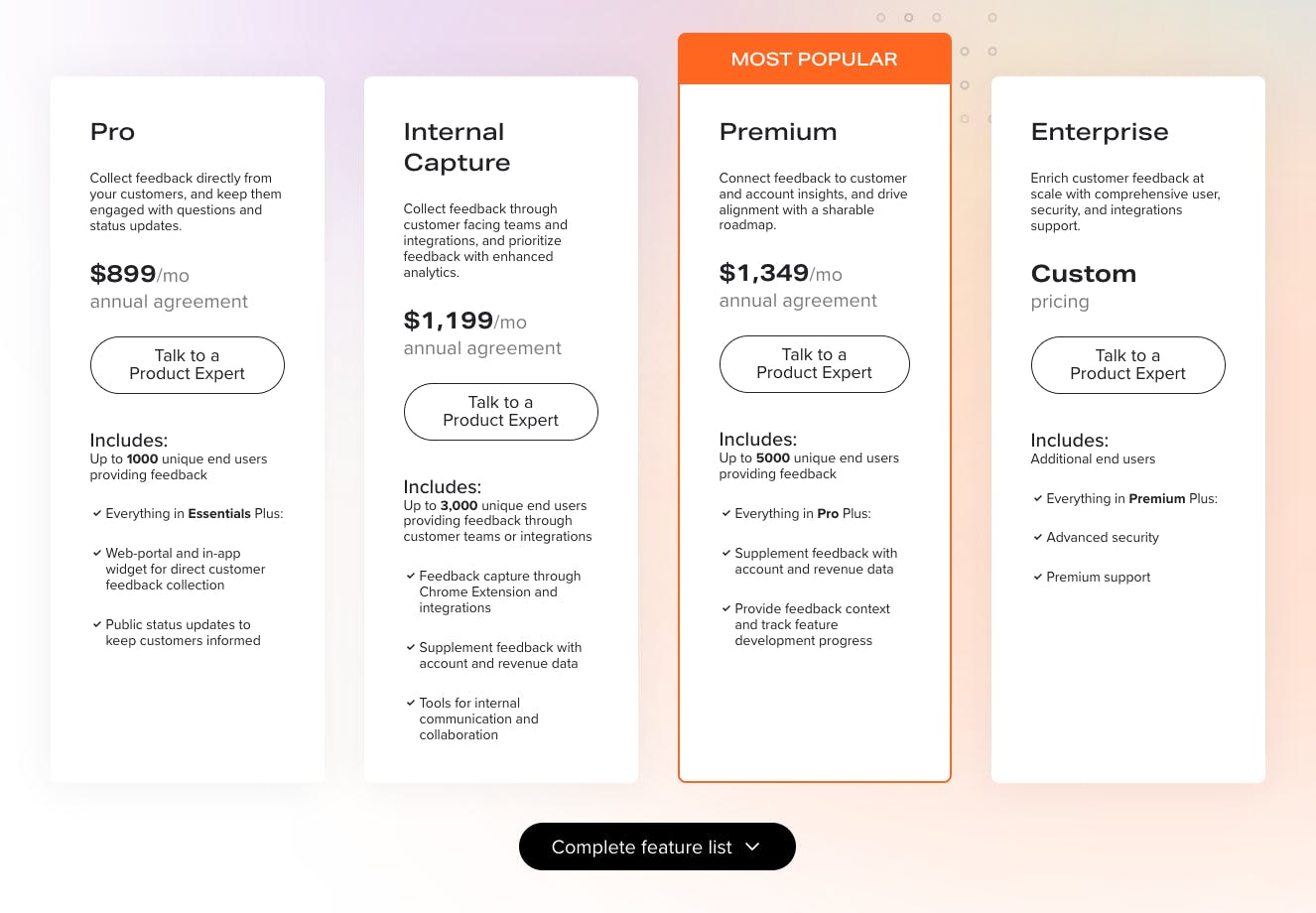
In this scenario, users unlock more features and a higher amount of value metrics when they upgrade to higher-priced plans. But what if their feature needs don’t scale with their value metrics? What if the customer wants to unlock all the advanced features, but the product's usage remains the same? Should they have to pay for additional value metrics, they simply won’t use?
Let's look at an example from an AI-powered internal communications tool that helps companies write, edit, plan, and send workplace updates. This tool charges its customers by the “number of messages sent”, which is directly aligned to the value their customers receive from the product. However, this metric does not necessarily scale with the product functionality that customers need.
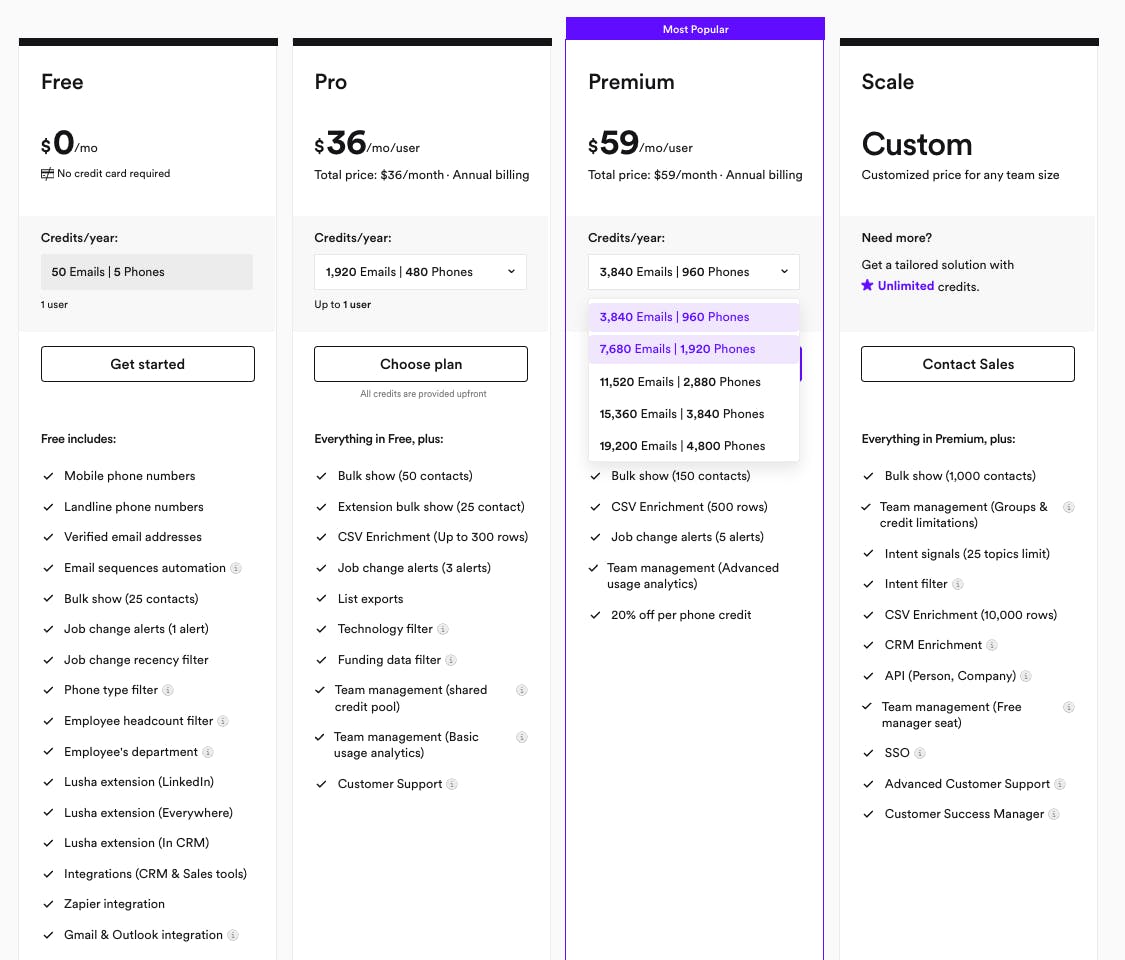
In sales conversations with some larger companies, they learned that although these companies have many employees and thus send out many messages, they didn’t need the full breadth of features that the tool had to offer. These companies were reluctant to sign on to more expensive plans that came with additional features they didn’t need just to gain access to additional messages.
On the flip side, some smaller customers were power users of the product but were simply never going to meet the scale of messages sent out by large enterprises. They wanted access to more advanced features that were only available in the premium plans, but they were priced out of these plans because of the high volume of messages included in the plan that they would never use.
Without understanding the relationship between value metrics and feature needs within your customer base, you’re likely to box customers into feeling like they’re paying for more than they need, which may result in fewer deals closed, customer dissatisfaction, or even churn.
Splitting your feature set from value metrics: pros and cons
There’s an argument that the rigidity of the basic pricing and package plans do not translate for every customer, so the question is, should you consider separating them?
Here are some things to consider.
Pros
- More customization and flexibility for your customers. As the earlier example covers, product usage doesn’t always scale with feature needs. Depending on your product and your customers, a traditional “good-better-best” model can make customers feel like they’re paying more than they need. Decoupling your value metric from your feature set allows customers to select the best plan for them, which leads to a better customer experience all around.
- More customer-centric. With this approach, customers get to learn the product's value on their own terms, deciding whether to upgrade plans based on the feature set or grow within their selected plan based on the required amount of usage. The power is in their hands.
- You improve user acquisition. If you operate in a relatively new segment of the SaaS industry, or your product is not yet widely understood, it may be helpful for customers to be able to “try” your core offering before committing to more. By allowing customers to start with basic features, you’re letting them discover the value of your product organically and helping them graduate to more advanced features without the pressure to unlock more usage.
- Better monetizes usage of the product. Forcing customers to upgrade to more expensive plans that include features they don’t need, just so they can access additional units of usage can be a detractor from growth. By separating the value metric from the feature set, you allow customers to grow usage within their selected plan, and upgrade to unlock more features only when they are ready to do so.
Cons
- More difficult for new customers to figure out how much they’ll pay. For companies that implement a self-serve motion, having different usage-based price points within each plan can make it harder for customers to determine their final cost. Adding pricing calculators to your pricing page can help alleviate this issue but may require additional time or investment from your team.
- It can be challenging to keep track of pricing plans. With more variation in your set tiered plans (i.e. multiple price points for different usage levels within each plan), it can become challenging to track customers’ plans and price points.
- It can be pricey and disruptive. Rehauling your entire approach to pricing plans isn’t a small feat and shouldn’t be a decision you take lightly. Disruption will extend past the workforce into your customer base, but if it makes sense for your long-term strategic growth goals, then it’s a disruption that’s worth it.
- Your subscription or billing platform might not support it. Not every platform can support these changes, so don’t forget to factor in the potential cost and effort of finding a new provider, and setting the wheels in motion.
Should I split my value metrics from the feature set?
Well, that really depends on a few things. Ask yourself the following questions:
- Does my billing platform support it? If you work with a billing provider that aligns with your business goals, you might not want the upheaval of finding another platform that can help you make this transition. Ask yourself — is this really worth it?
- Is there a pattern to customer complaints? If customers regularly complain about having to purchase the next subscription tier when the features or value metric doesn’t appeal to them, it might be worth surveying them to find out what they’d value instead before making big changes.
- Is acquisition primarily self-serve or sales-led? Value metrics often serve as a helpful guide for customers to quickly figure out which plan they’ll need and how much they’ll pay. In a sales-led motion, this may not be an issue, as customers can speak to a sales rep before purchasing your product. However, if customers are typically purchasing your product via self-serve, you may want to consider adding a pricing calculator to your pricing page.
- Do we have the necessary funds to invest in these changes? Making any change to your pricing strategy can be pricey, so is this something you should invest in now or is it better to wait a few more years and re-evaluate?
How to choose the right value metric
At PI, we apply three pillars of value metrics to this pricing structure: simplicity, value alignment, and growth.
1. Simplicity: Is the value metric easy enough to understand? You want customers to land on your pricing page and make an informed decision about which plan is best for them.
The example below from Pirsch is perfect. The customer uses the monthly page view slider to gauge real-time pricing differences. Simple.

2. Value alignment: Is your chosen value metric aligned with the value users get from your product? If not, you’ve got a problem!
3. Growth: Your value metric should grow with your customer—not only to ensure happy customers but also to increase your monthly recurring revenue (MRR) in a much more predictable way.
PI recommendations when splitting your feature set from your value metric
So, if you’re going to separate your feature set from your value metric, where do you start?
Offer just one primary value metric
This makes it simple for everyone considering your SaaS product. On the pricing page, you should clearly state your value metric (i.e., active users, bandwidth, number of emails or contacts, etc.) and how it impacts costs.
A visual way to represent cost versus value is to create a toggle or calculator tool on your website. This helps potential customers understand your product costs quickly. If the person researching your pricing needs budget approval to purchase, this toggle will help them significantly.
Here is an example from the localization management platform Crowdin.

Determining the price point for your new pricing structure
At PI, we'd likely still do a Gabor Granger study to determine price points but test different ranges based on volume.
For example:
- A company has a Basic vs. Advanced Plan, and the value metric thresholds are 1-1000 messages, 1000-5000 messages, 5000+ messages
- We’d ask respondents to select which plan they would choose
- Depending on the plan and number of messages they say they need, we’d then test a specific set of price points
There is an exception to this scenario. If the product is new and pricing has not been established, we might use a more open-ended pricing research methodology such as Van Westendorp. However, this is not typically our recommended approach as it gives respondents autonomy to dictate pricing.
Real-world examples
Sometimes, you need a physical example to compare before deciding if a particular option is right for you. Here are two examples of companies separating their feature sets from value metrics.
TestGorilla
TestGorilla is cloud-hosted HR candidate assessment software that helps companies remove bias from their hiring process. Their pricing plans are pretty customizable. There are still tiered packages, with each offering more advanced features, for example, Free, Starter, and Pro plans, but companies can select how many users they want for each plan.
And the user options are vast, from one to 15 employees up to 1,000+, and everything in between.
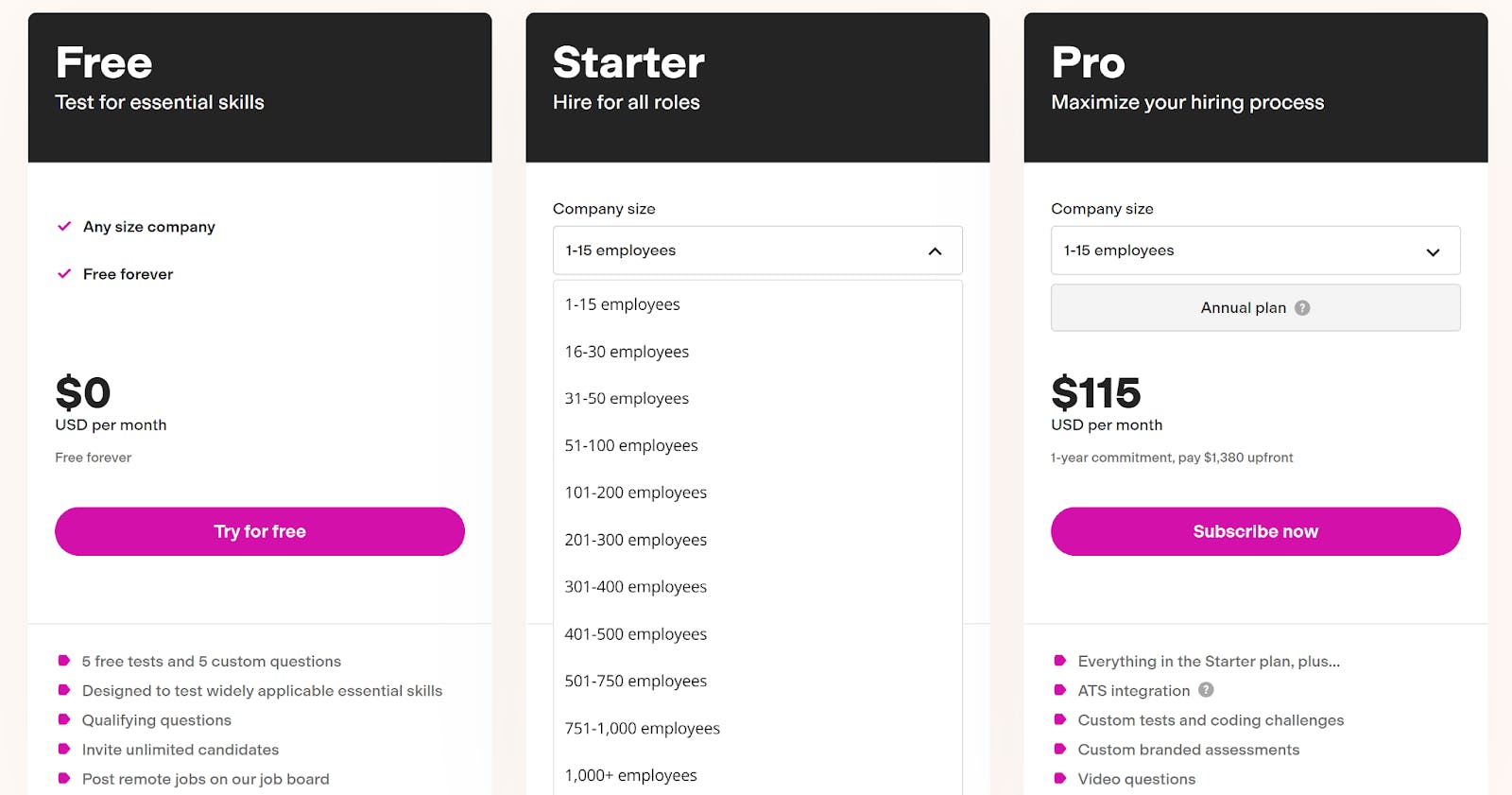
Brevo
Previously known as Sendinblue, Brevo is a marketing platform that offers customers a comprehensive solution for managing customer relationships, from email marketing to sales automation.
Let’s take their email marketing pricing plans as an example. Businesses can choose from four plans: Free, Starter, Business, or Enterprise. The free plan gives you a chance to try this software and decide if it is for you long-term without the hefty price tag.
Marketing automation is capped at 2,000 contacts, but the software allows you to email up to 100,000 contacts and send up to 300 emails a day—a relatively generous offering for a freemium subscription. Again, this approach allows customers to explore the product without committing to paid contracts, encouraging them to graduate to advanced features in their own time.
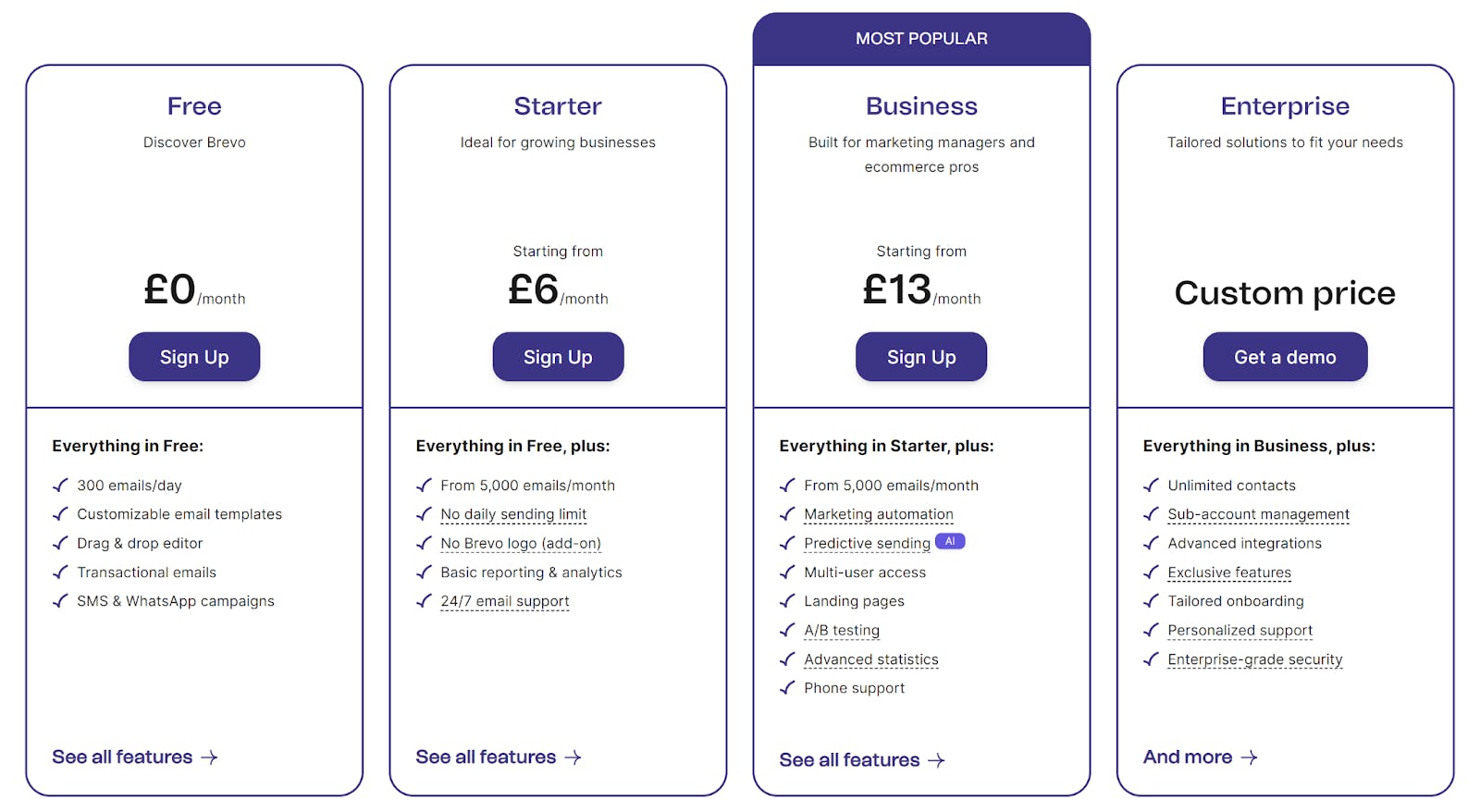
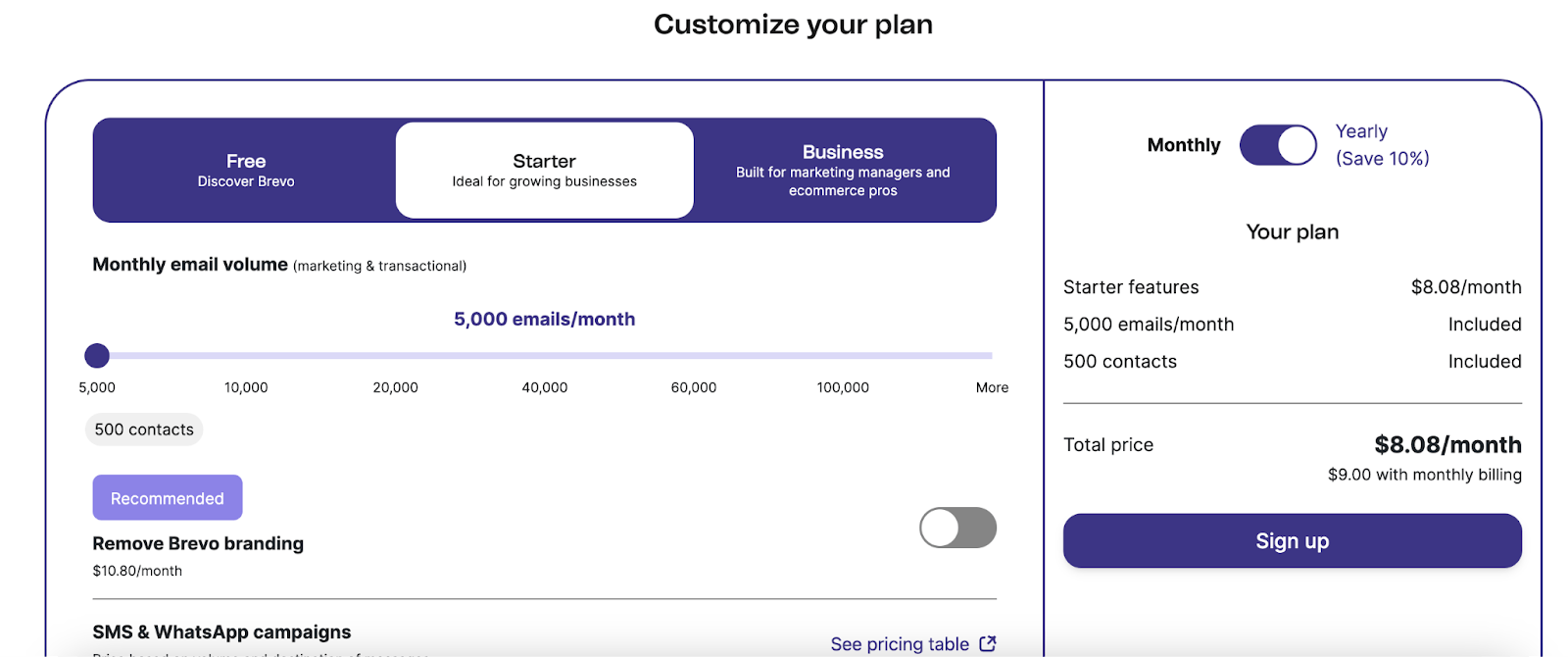
Like many things in life, there’s no one-size-fits-all approach to pricing. Deciding whether to separate features from value metrics really comes down to what your customers care about and how you can best deliver that.
Ultimately, customers want a valuable product that is delightful to use. Keeping their experience front and center will help guide any changes you make to your pricing strategy.





